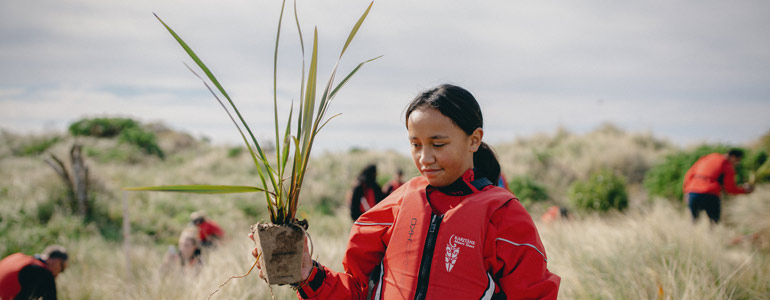Future state 2: Te Taiao – Regenerating
Reconnecting with, caring for and protecting our environment.
On this page

There is resounding agreement that the existential global threat to the planet’s life-supporting ecosystems must be addressed. The climate crisis is an immediately pressing issue as acknowledged by the Government’s declaration of a climate emergency; but other issues such as soil erosion, marine protection, freshwater quality, landfill waste and biodiversity also need to be grappled with.
Te Taiao regenerated itself naturally during COVID-19 lockdown periods when human impacts either reduced or stopped completely. The immediate challenge is to drastically reduce the biophysical footprint of the visitor economy by decarbonising: sequestering, enhancing biodiversity, restoring the quality of rivers, lakes and oceans, and eliminating waste that accumulates as pollution.
People look after what is precious to them – we need the land to be healthy for us to be healthy. By enjoying their connection with nature, people will value and want to protect it. The visitor economy can play an active role in both regenerating and reconnecting more New Zealanders with their natural world to enjoy the physical, psychological, emotional and spiritual benefits that will come from that. These experiences can be enriched further by linking nature with culture and instilling the Māori and Polynesian values of connection to Te Taiao.
This Future State sits at the core of the 4 wellbeings. It is an essential element of delivering on 100% Pure New Zealand and nurturing the life-supporting capacity of Te Taiao.
Future state 2 - Recommendations
To achieve the desired Future State, we recommend:
2.1 Enriching nature – Commit to and invest in the visitor industry being authentically 100% Pure
To achieve this, we need to set ambitious strategic goals to establish Aotearoa New Zealand as having the world’s most environmentally sustainable visitor industry.
The visitor industry has the opportunity to lead the world by demonstrating its care for the natural world. In part, this will be achieved by establishing high standards for sustainable practice and incorporating them into any new industry standards (Recommendation 1.1), as well as all funding, accountability and incentive structures. This must include:
- A pathway to address carbon emissions through local offsetting (ideally through planting permanent native forests), investing in development/provision of new aviation fuels and rapidly accelerating the development of electric vehicles and other sustainable transport infrastructure.
- Advancing projects that restore damaged landscapes, rivers and seas, predator damage, or biodiversity loss.
- Achieving zero-waste and incentivising Aotearoa New Zealand’s visitor economy to become known as having the lowest footprint in the world.
More defined recommendations will be provided in our final report as we explore the issues of decarbonisation, biodiversity and regenerative tourism.
2.2 Protection and accessibility – Modernise the Conservation Act
The Conservation Act needs to be amended to embed an approach that integrates the four wellbeings and an enhanced Treaty Partnership as the core guiding principles. The amendments should give DoC the necessary powers to implement changes effectively, and specifically provide for:
- New pricing and supply management tools.
- Enabling investment by the private sector that supports visitor and conservation goals.
- Greater involvement of iwi and co-governance approaches for managing parts of the DoC lands and waters, and delivering visitor experiences there.
- A new concession approach which is an active tool to achieve visitor and conservation outcomes through prescribed higher standards.
- Facilitating new product development in regenerative and environmental tourism.
- Aligning conservation management planning with destination management.


